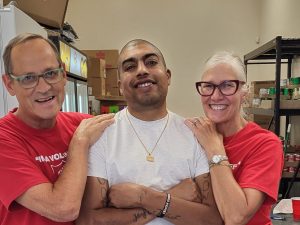Coordinated national response provides effective service.
by Melissa Temme –
Since 2001, no less than eight major disasters have ravaged the United States. Countless additional disasters—heat, flood, or fire—and myriad international disasters grabbed the attention and ultimately, the financial support of the nation. In most cases, The Salvation Army responded to these events, mobilizing its physical resources quickly and effectively. While this response has been consistent, the communications process has undergone a steady evolution.
Great disasters make it difficult to speak in terms of success or failure. Yet during unspeakable tragedy, the public focuses on those who render aid. Success in communicating the Army’s message while rendering aid to those struck by tragedy can be measured in two ways: the amount of media coverage during the event, and the total amount of money donated as a result.
While an unspeakable tragedy, the 9/11 terrorist attacks raised public awareness of The Salvation Army through the surrounding media activity. No event in the fifty years prior to 2001 generated more coverage for the Army. The attacks also showed the faith of the public, who donated a total of $86 million to The Salvation Army, the largest amount donated to the Army for disaster relief to that date.
The massive succession of hurricanes in 2004 saw National Headquarters (NHQ) stepping into the role of proactive media outreach. While the coverage was minimal, it introduced the media to the Army as a mass care provider. The lessons learned enabled plans to be put in place which were implemented during Hurricane Katrina.
No single event has generated more coverage for the Army in the U.S. as Hurricane Katrina. An NHQ study shows that during the two weeks following the event, media exposure received by the Army increased by 400 percent when compared to 9/11. As of June 2006, the American public had given over $360 million to The Salvation Army’s Hurricane Katrina and Rita fund—over four times the previous record for generosity set following 9/11.
Fears of “donor fatigue” proved unfounded as the Christmas season saw record breaking giving. The message of the Army’ work was delivered through national and local reporters, newly attuned to the Army’s daily work helping others across the country.
The outpouring of support for the Army’s work after Hurricane Katrina is merely an indicator of greater change: For one of the first times in the Army’s U.S. history, every level of the Army spoke with one voice—for a truly integrated approach.
As a result, one U.S. West division found that more than 60 percent of donors for Katrina were new donors. Since December, 10 percent of these donors have given more than twice to non-disaster related services. These new contacts chose to help others in a time of great crisis and to do it through The Salvation Army. In giving, they discovered the amazing work the Army is doing in their own communities.












